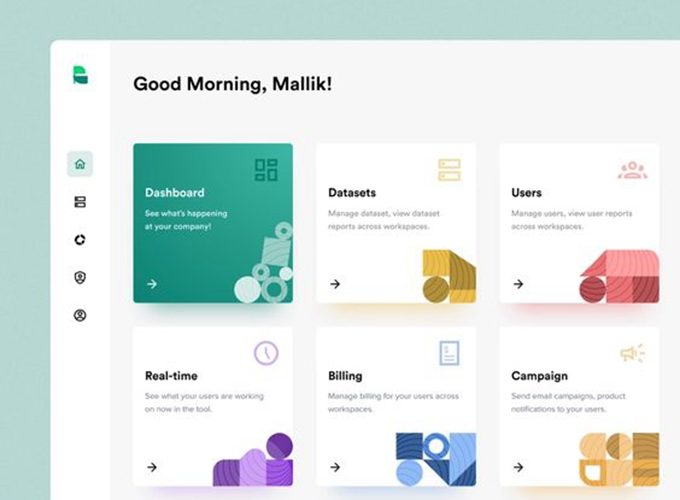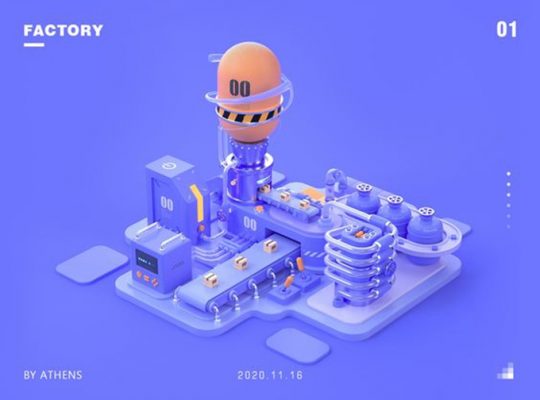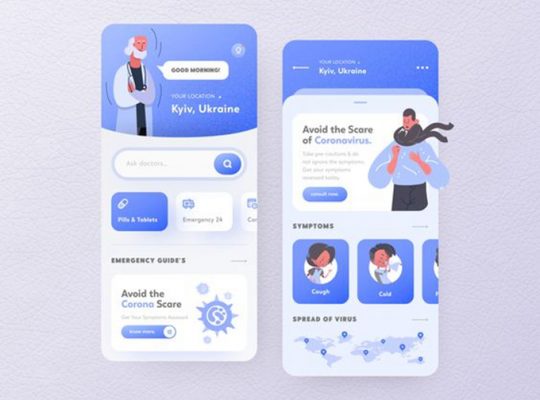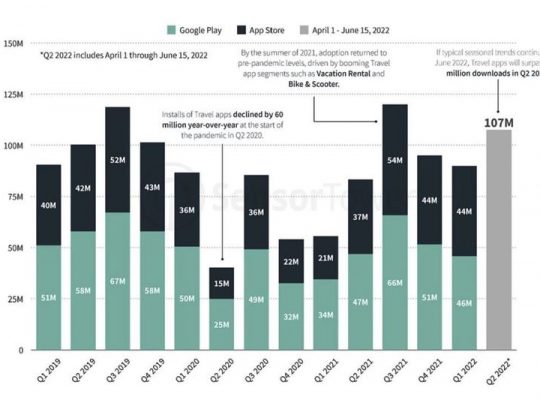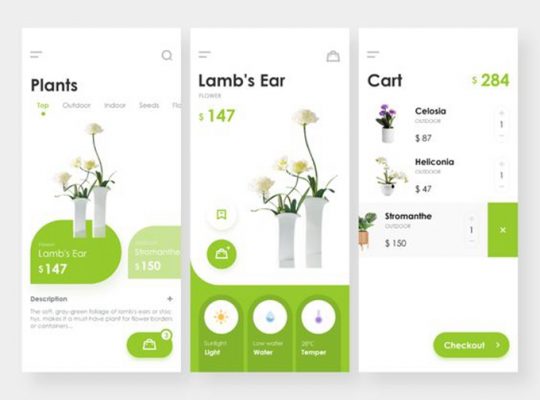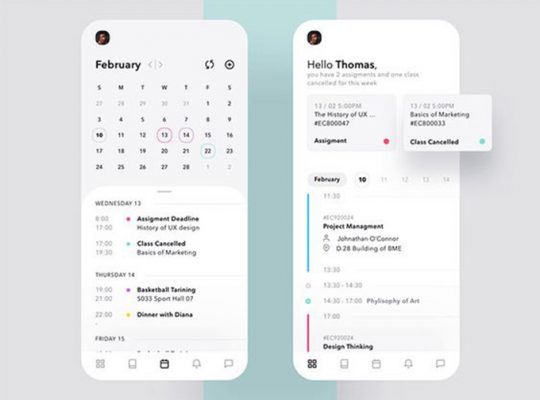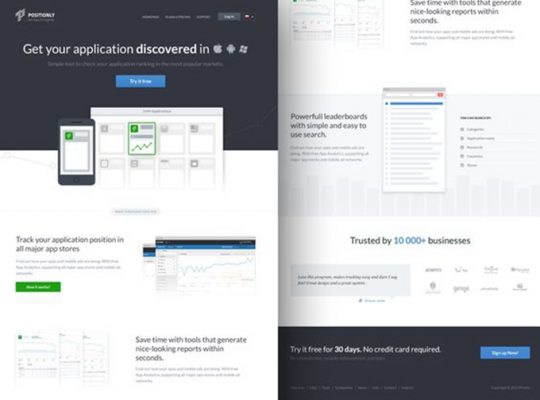App automation can take away bottlenecks, save money and time, enable you to present a greater buyer expertise, and enhance inside collaboration. But it surely ought to by no means substitute the human contact.
Table of Contents
On this article, we’ll present you the best way to leverage app automation to supply desired outcomes and reclaim productiveness. We’ll additionally discover examples to use throughout the client journey and instruments you possibly can experiment with and put money into immediately.
How one can establish apps and instruments that might profit from workflow automation
The aim of app automation is to supply cohesiveness throughout your workflows. This implies platforms, databases, and the actions that drive them working to serve one another.
For instance, let’s say we use Fb Adverts to drive visitors and seize leads. The workflow would possibly look one thing like this:
- Person is directed to a touchdown web page
- They enter their particulars to entry a lead magnet
- On the next web page, they’re invited to e book a session
A number of instruments are used to make this occur:
- A software likeUnbounce to construct the touchdown web page and lead seize kind
- An e-mail advertising software likeActiveCampaign to nurture leads
- A scheduling software likeSavvyCal to e book the session
- A CRM likePipedrive to retailer contact particulars
We are able to go lead info manually from one platform to a different by downloading and importing CSV recordsdata, copy-and-pasting e-mail addresses from one software to a different, and so forth.
Or, we are able to use app automation to have these methods discuss to one another. For instance, when somebody fills out a kind on our touchdown web page, these particulars are instantly handed to an e-mail advertising platform and CRM.
Equally, as soon as the lead books their session, their particulars within the CRM are up to date, and so they’re added to a brand new e-mail automation workflow.
App automation and workflow integration must be properly thought out. In any other case, you’ll find yourself with automations that lack cohesiveness and are liable to error. You’ll be able to’t automate the whole lot directly and count on to repair all of your workflow points.
Constructing a workflow automation plan
It’s straightforward to say “let’s set up a chatbot as a result of everybody else is”. In spite of everything, if 74% of customers report they like chatbots as a result of they supply fast solutions to widespread questions, it is smart to implement them.
Nevertheless, it’s tough to measure the influence of a brand new software or know-how if you happen to don’t have a transparent aim. Moreover, if you happen to don’t have a plan to combine a chatbot into your martech stack (e.g. CRM), capturing the information and insights wanted to optimize the client journey will likely be difficult.
Earlier than connecting the apps that make up your tech stack, be sure to absolutely perceive your objectives and the way every element contributes to the client expertise.
For instance, you might discover that, upon experimenting with chatbots, it will increase demo signups to your SaaS product by ~3%. Understanding this lets you discover new methods to embed this software into the client journey, corresponding to:
- Offering a greater expertise interacting with the chatbot itself (higher copy, dialog paths, and so forth.)
- Serving content material primarily based on the reply to a person’s query (and utilizing this perception to tell your editorial calendar)
- Segmenting e-mail lists primarily based on what a person is most curious about
It’s essential that you simply begin this course of with the client journey itself. This implies having an entire understanding of how potential prospects take into account, consider, and purchase your services or products within the first place. You’ll be able to solely optimize a software if it’s already confirmed to get outcomes.
Begin by mapping the client journey earlier than your automation workflows. Understanding how prospects familiarize themselves with the issue you clear up and the answer you present will let you join the dots together with your tech stack:
Within the instance above, the journey is damaged down by lifecycle stage, touch-points, and frustrations. Preact have recognized “factors of friction” within the buyer journey that might be irritating potential prospects, and due to this fact shedding their consideration.
Conducting this train achieves two issues:
- It permits you to clearly visualize how prospects work together together with your model, presenting alternatives to automate every stage of the journey
- It helps you develop extra partaking, pleasant buyer experiences
Subsequent, map out how every app and gear help with every step of this journey:
Right here, every step is color-coded by the software. For instance, the steps coloured in pink symbolize Salesforce, which clearly visualizes the connection between one motion or set off to the subsequent.
Lastly, set clear objectives and KPIs on the way you’ll measure the efficiency of this workflow. For instance, a macro aim might be “rising the variety of gross sales from sure viewers segments.” A micro aim beneath that might be “personalize e-mail messaging for every phase.”
Audit your stack for apparent automation alternatives
Subsequent, audit your instruments towards your objectives. For instance, our aim of higher viewers segmentation and personalizing our messaging relies on having a software that may do each.
To realize this aim, you want a martech stack that may:
- Accumulate the appropriate buyer knowledge
- Section prospects, leads, and subscribers by attribute
- Ship personalised messaging primarily based on these attributed
As Good Panda Labs says, getting different groups concerned on this course of is essential to get proper. They counsel asking your self the next questions:
In addition to understanding these concerned on the decision-making stage, earlier than you onboard or roll out new instruments, it’s worthwhile to design your workflow.
This lets you keep away from confusion, will increase the probabilities of buy-in out of your crew, and offers you one of the best likelihood of success together with your implementation and ongoing use.
To do that, ask your self the next questions regarding your crew:
– Who wants to make use of every software in your stack at present?Are they the appropriate folks?
– Are there others whose roles the software improves?
– Who ought to take possession of instruments, or duties inside them?
– Do it’s worthwhile to herald exterior assist?
An audit will uncover alternatives that may shortly profit from automation. For instance:
- Content material is at present being uploaded to the CMS manually
- New e-mail advertising alternatives primarily based on behavior-driven triggers
- Posting to social media accounts
- Initiating a demo enroll
- Sending a post-purchase survey to new prospects
Predictable and repeatable duties are straightforward targets for automation. Sure situations require a human contact, so be sure to construct in processes that enable for human intervention—even in repeatable workflows.
Keep in mind the variations between dynamic vs. static workflows:
- Static workflows haven’t any variance.They run in strict sequences, usually on the similar time of day, week, or month (e.g. month-to-month e-mail publication to total subscriber record on X day every month)
- Dynamic workflows are extra agile and versatile.They run when sure circumstances are met, which will be knowledgeable by knowledge, person conduct, or different quantitative components (e.g. an e-mail notification despatched as soon as a person efficiently completes a job inside a SaaS product)
Static workflows are simpler to implement as they require fewer guidelines and concerns. When prioritizing your workflows, begin right here and work towards extra complicated options. By beginning with easy automations, your crew will be capable of reclaim their time to deal with extra productive or strategic actions.
When the time involves implement extra complicated automations, take into account constructing a digital roadmap and take your time with low-code (or no-code) options.
How one can leverage app automation to speed up the client journey and obtain operational excellence
Let’s have a look at how workflow automation will be utilized to realize objectives and execute duties at every stage of the client journey, in addition to constructing out operational methods that suit your wants.
Consciousness
Advertising requires a multi-channel method. Even startups with a lean advertising technique put money into no less than two or three channels. However this may end up in knowledge being saved in silos.
Let’s say you’re an ecommerce model that runs Fb Adverts to retarget web site guests and new prospects. To do that with out automation, you’d must manually add a .CSV file of shoppers frequently whereas monitoring how they’ve interacted with these advertisements.
With a no-code automation software like Zapier, you possibly can add new prospects out of your Shopify retailer to a customized viewers in Fb Adverts each time they create an account or make a purchase order:
In the end, app automation on the consciousness stage means unifying instruments, channels, and platforms which might be in any other case scattered. It’s at this stage you’re producing new prospects, leads, or person sign-ups, and also you’ll must ask your self:
- What are crucial knowledge factors at this stage?
- The place do we discover this knowledge?
- Do totally different instruments provide conflicting knowledge?
Begin by defining essential info you want from new prospects or customers. What attributes are required to progress via the client journey? This might be so simple as a primary title and e-mail handle, or as complicated as bank card particulars acquired from a trial.
Resolve the place this knowledge must be saved, which must be your CRM of alternative. This can act because the “single supply of reality” on your buyer knowledge. Your advertising apps and instruments will feed knowledge into your CRM, which may then be accessed later to execute particular duties.
For instance, let’s say you generate leads by providing free ebooks like the next from Vidyard:
The shape captures the contact’s title, e-mail handle, and job title. When the person fills within the kind and hits “I Need This!” the next automations occur:
- Particulars are despatched to Pipedrive as a brand new contact
- A customized drop-down area known as “Purchaser Section” is outlined primarily based on their job title
- Contact info is then added to an inventory in ActiveCampaign, triggering an e-mail automation workflow
- Lastly, they’re added to a customized viewers in Fb Adverts that serves content material related to the book
No-code automation instruments like Zapier make this doable with none handbook downloading of .CSV knowledge. Person conduct triggers an motion that performs duties on autopilot.
Consideration
Persevering with on the journey we began with our book lead above, let’s say they click on an e-mail CTA, taking them to a product touchdown web page. The contact is then faraway from the preliminary Fb Advert customized viewers and added to a brand new one which serves them product advertisements.
It is a particular instance of how app automation can empower extra versatile lead nurturing. At this stage, it’s vital to personalize messaging, content material, and artistic so as to display how one can assist a possible buyer clear up their issues.
Within the earlier part, we used an instance the place we used job titles to broadly phase leads. However what if you happen to don’t have that knowledge?
Person conduct could be a dependable indicator of what your viewers’s priorities, needs, and desires are. This conduct appears totally different throughout industries, however they will embody:
- Interacting with product pages and including merchandise to wishlists. It is a sturdy sign {that a} person has particular pursuits, even when they’re not prepared to purchase.
- Studying weblog content material related to the issues your SaaS resolution solves (or the “jobs to be executed” (JTBD) that they empower). Center- and bottom-of-funnel-content could be a sturdy indicator that customers are getting into the consideration section.
- How engaged they’re together with your advertising. For instance, a excessive open and click-through-rate in your emails means that your messaging resonates. They might not be prepared to purchase from you, however itis doubtless they’ve an affinity together with your model.
This behavioral knowledge acts as triggers for particular automation duties. This might embody recording that conduct in a CRM or performing a particular motion, corresponding to sending an e-mail or including a contact to a brand new advert marketing campaign.
For instance, right here’s an e-mail Airbnb despatched to a person exhibiting sturdy intent to e book a spot to remain in San Diego:
This conduct would have first been recorded by an automation platform or through occasions in Google Analytics. This knowledge can then be recorded in a CRM and transferred to an e-mail automation platform that customizes e-mail copy and artistic primarily based on the content material they looked for.
Conversion & retention
The info and exercise we’ve collected and performed to date is for one goal: to drive conversions.
This might be a purchase order, app obtain, user-sign up, demo, or session.
Within the earlier part, we centered on behavioral triggers to assist us higher perceive our potential prospects. This lets you serve messaging that furthers a business relationship. For instance, serving advertisements for merchandise {that a} person has added to their cart with out buying:
The “connections” for this app automation are acquainted, as we’ve demonstrated how a CRM, Shopify, and Fb Adverts can all “discuss” to one another. The distinction right here is the added layer of complexity.
Automation is now not merely shifting knowledge from A to B. It’s working to dynamically enhance the client expertise primarily based on an enormous array of historic knowledge collected on a particular person.
The identical therapy applies to retention. When somebody makes a purchase order, you have got higher perception into their pursuits and desires. This impacts the way you personalize content material, inventive, and the channels you employ to succeed in them.
The channels stay principally the identical, however the breadth of knowledge obtainable and the way it’s utilized turns into extra complicated after we get to the conversion and retention stage of a buyer’s lifecycle.
Optimizing your operational workflows
Whereas app automation is efficient at connecting the dots at a tactical advertising stage, it’s additionally invaluable for operational workflows—corresponding to challenge administration and communication throughout your group.
The place an end-to-end platform doesn’t go well with all of your wants, app automation can bridge the hole between a number of operational instruments, present full visibility throughout your organization, and save time on administrative duties.
For instance, at my content material advertising company, we went via a course of to guage a number of end-to-end challenge administration instruments to go well with our wants. Our standards was easy:
- The software of alternative should present a high-level overview of all initiatives throughout the company, performing because the “pulse” of our shopper supply operation
- Every job should be damaged down by challenge milestone (or “stage”)
- It should have performance to supply processes and checklists, permitting our crew to successfully execute on every standardized job
Whereas most challenge administration instruments are nice at factors two and three, we struggled to search out any that offered the seen overview that was essential for our high-level operational workflows.
So, we determined to make use of Airtable as our “company pulse,” giving us perception into the standing of every challenge throughout the company:
We then settled on Asana as our challenge and job administration software of alternative, breaking down and monitoring particular duties for every challenge. Every part is standardized, so the templates Asana permits us to construct are invaluable. Everybody is aware of precisely what to do, and when every job is due by:
The following problem was getting these two apps to speak to one another. That is the place Zapier is available in. Each time a job is marked as “accomplished” in Asana, it amends the standing or stage of that challenge in Airtable:
Utilizing Airtable, Asana, and Zapier as the inspiration of our operational tech stack could take longer to implement than end-to-end options. But it surely permits us to construct a system that completely suits our wants.
4 workflow automation, low-code, and no-code instruments to guage and experiment with
Let’s discover some low-code and no-code instruments that you should use to construct your app automation methods.
1. Zapier
A agency favorite amongst startups, Zapier connects with over 3,000 apps, boasting the power to automate them in “tens of millions of the way.”
The UI is modern and easy, permitting you to set triggers and actions throughout a number of apps to realize particular objectives:
Pricing begins at $20 /MO (or $18.33 /MO with an annual subscription), and comes with a free plan that permits you to check the software out with 5 “zaps.” Zapier is ideal for startups and solo founders seeking to automate particular workflows.
2. Appian
Appian’s low-code platform is ideal for these with extra sturdy wants. From enterprise course of administration to AI-driven doc processing, Appian permits you to construct out extra complicated workflows:
Their core worth proposition is centered round knowledge administration and migration, good for manufacturers that take care of giant quantities of buyer knowledge containing dozens of attributes. Pricing begins at $75.00 /MO per person.
3. Automate.io
An alternative choice to Zapier, Automate.io offers an intuitive software that connects over 200 apps to automate repetitive duties:
As you possibly can see, the UI locations triggers, actions, and knowledge migration choices side-by-side. You too can add circumstances so an automation solely runs when sure standards are met:
Pricing for Automate.io begins at $9.99 /MO, and features a restricted free choice for these wanting to present it a check drive.
4. Bubble
The automation instruments above are linear, in that you simply’re reliant on the UI of every app and their limitations. For instance, Asana doesn’t but let you create initiatives from a template in Zapier.
Constructing proprietary instruments could be a workaround to those limitations, and low-code net utility builders like Bubble make it accessible to a non-technical viewers:
Bubble permits you to retailer and handle knowledge, combine with a number of current instruments and, extra importantly, construct your personal UI match for goal. For instance, Teeming constructed a distant work software that brings collectively distributed groups to bond and collaborate via current communication platforms:
Utilizing Bubble, Teeming created a UI that permits distant work leaders to create work classes, after which combine with Zoom, Slack, or Skype to run these classes collectively.
Pricing begins at $25 /MO, and comes with a free plan if you happen to’d wish to construct a sandbox to experiment with.
